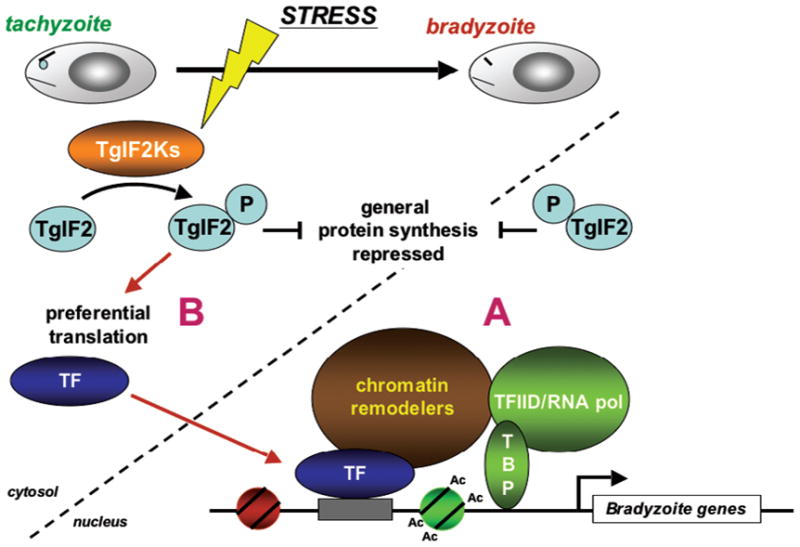Fig. 1.

Multiple levels of regulation control stress-induced differentiation in Toxoplasma. The developmental transition from proliferating tachyzoites to encysted bradyzoites, which can be induced by cellular stress, is regulated by transcriptional (A) and post-transcriptional mechanisms (B). At least one response pathway that has been linked to stress-induced bradyzoite differentiation involves the eIF2 kinases, which lead to the phosphorylation of eIF2α in response to stress. In turn, this decreases general protein synthesis in favor of a select subset of mRNAs that may encode transcription factors (TF). Other post-transcriptional modes of regulation, such as RNA transport or splicing, may also be involved (not shown). While no transcription factor has been directly implicated in Toxoplasma developmental transitions, cis-elements have been identified in bradyzoite promoters (gray box). There is also evidence that epigenetic events, such as chromatin remodeling, are associated with gene expression changes that are required for bradyzoite differentiation. An example of histone acetylation (Ac), which activates gene expression, is shown (see Fig. 2). It has yet to be determined if similar mechanisms of regulation occur in parasites that “spontaneously” differentiate, i.e. convert to bradyzoites without a stress application. TBP: TATA-binding protein.
